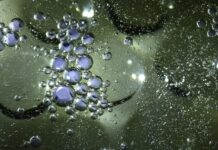In the intricate ecosystems of freshwater bodies, a group of aquatic plants known as Pigmyweeds (family: Crassulaceae) holds a unique and intriguing place. This article embarks on a comprehensive exploration of Pigmyweeds, their characteristics, significance, and the role they play in shaping aquatic environments worldwide.
Pigmyweeds, members of the Crassulaceae family, are a diverse group of aquatic plants that thrive in various aquatic habitats, from ponds and lakes to slow-moving streams and wetlands. Their presence often goes unnoticed by many, yet they play an essential role in maintaining the delicate balance of aquatic ecosystems. Pigmyweeds exhibit remarkable adaptability to diverse environments, showcasing a spectrum of sizes, growth forms, and physiological traits that allow them to thrive in both temperate and tropical regions.
While the common name “Pigmyweed” encompasses several species, they are collectively known for their distinctive appearance and growth patterns. These plants are characterized by succulent leaves, typically arranged in whorls along the stem, and small clusters of inconspicuous flowers. Their morphology is well-suited to their aquatic lifestyle, as their succulent leaves help them buoyantly float on the water’s surface, maximizing their exposure to sunlight for photosynthesis.
Pigmyweeds’ ecological significance extends beyond their aesthetic appeal. These plants are integral components of aquatic food webs, providing habitats, shelter, and nourishment for various organisms. Their submerged foliage offers refuge for aquatic invertebrates, small fish, and amphibians, contributing to the overall biodiversity of aquatic ecosystems. Additionally, Pigmyweeds’ ability to extract nutrients from water and sediment helps mitigate nutrient imbalances, potentially preventing issues like algal blooms.
One of the remarkable traits of Pigmyweeds is their adaptability to different water conditions. Some species thrive in nutrient-rich waters, while others excel in nutrient-poor environments. This adaptability makes Pigmyweeds valuable indicators of water quality, as their presence or absence can provide insights into the health and ecological integrity of a freshwater system. As bioindicators, they offer a snapshot of water conditions and can signal potential pollution or disturbances.
Beyond their ecological roles, Pigmyweeds have also caught the attention of aquatic horticulturists and hobbyists. Certain species of Pigmyweeds, with their vibrant colors and unique growth habits, have found their way into aquatic gardens, water features, and aquariums. Their compact size and ability to thrive in confined spaces make them attractive choices for enthusiasts looking to create captivating aquatic landscapes.
Pigmyweeds are not without challenges, however. In some cases, their adaptability and prolific growth can lead to invasive behavior, outcompeting native plants and altering aquatic habitats. This highlights the need for responsible cultivation and management practices, ensuring that these plants do not disrupt the delicate balance of native ecosystems.
As our understanding of aquatic ecosystems deepens, Pigmyweeds remain subjects of scientific inquiry. Researchers are uncovering the intricate roles these plants play in nutrient cycling, carbon sequestration, and interactions with other aquatic organisms. Insights gained from studying Pigmyweeds contribute to broader conservation efforts and strategies aimed at preserving the health of freshwater habitats.
In conclusion, Pigmyweeds are fascinating aquatic plants that have captured the interest of scientists, enthusiasts, and ecologists alike. Their unassuming presence belies their significance in maintaining aquatic ecosystems and their potential as bioindicators of water quality. As we continue to uncover the intricacies of these plants and their interactions with their surroundings, Pigmyweeds shed light on the delicate web of life that thrives beneath the water’s surface.
Aquatic Adaptability:
Pigmyweeds, belonging to the Crassulaceae family, showcase remarkable adaptability to a range of aquatic habitats, from ponds and lakes to streams and wetlands.
Distinctive Morphology:
These aquatic plants are recognized by their succulent leaves arranged in whorls along the stem and inconspicuous clusters of flowers, which enable them to float buoyantly on water surfaces.
Ecological Significance:
Pigmyweeds play a crucial role in aquatic ecosystems, offering habitats, shelter, and nourishment for various organisms. They also serve as bioindicators, providing insights into water quality and ecosystem health.
Aquatic Horticulture:
Certain species of Pigmyweeds are favored in aquatic gardens, water features, and aquariums due to their vibrant colors, compact size, and ability to thrive in confined spaces.
Scientific Inquiry:
Pigmyweeds remain subjects of scientific research, as their roles in nutrient cycling, carbon sequestration, and interactions with other aquatic organisms are being unraveled, contributing to broader conservation efforts and ecosystem preservation.
Beneath the shimmering surface of ponds, lakes, and streams, a world of intricate life unfolds—one where Pigmyweeds (Crassulaceae family) reign as unassuming yet significant inhabitants. In this submerged realm, Pigmyweeds play roles that extend beyond the ordinary eye, shaping the dynamics of aquatic ecosystems in ways both subtle and profound.
To the casual observer, the aquatic environment might seem serene and unchanging. However, it is a world of constant flux, driven by intricate interactions among plants, animals, and environmental factors. Pigmyweeds, with their unique adaptations and unobtrusive presence, embody this delicate equilibrium.
One of the remarkable aspects of Pigmyweeds is their ability to thrive in diverse aquatic habitats, from tranquil ponds to babbling brooks. Their adaptability is a testament to nature’s genius in crafting life forms that can flourish amidst varying conditions. As Pigmyweeds take root in the waterbed, their succulent leaves enable them to float effortlessly on the water’s surface, creating habitats that are both distinctive and ecologically significant.
Amidst the intricate waterways, Pigmyweeds quietly offer refuge and sustenance to an array of aquatic organisms. Their dense foliage provides shelter for tiny invertebrates, juvenile fish, and amphibians seeking protection from predators. The submerged haven becomes a sanctuary for life forms that rely on Pigmyweeds for both habitat and sustenance, forming a complex web of interconnected relationships.
The dynamics of aquatic ecosystems are intricately linked to nutrient cycles. Pigmyweeds, with their capacity to absorb nutrients from water and sediment, contribute to the regulation of nutrient imbalances. This role in nutrient uptake can have a cascading effect on water quality and overall ecosystem health. As they absorb excess nutrients, Pigmyweeds help prevent algal blooms and maintain the delicate balance of the aquatic environment.
Beyond their biological significance, Pigmyweeds offer a feast for the senses. Their unassuming flowers, though small and often inconspicuous, contribute to the overall visual tapestry of aquatic landscapes. Subtle clusters of blooms add splashes of color, enhancing the aesthetic appeal of the watery realm. Moreover, their ability to flourish in different water conditions adds diversity to aquatic flora, enriching the biodiversity of these ecosystems.
For aquatic enthusiasts, Pigmyweeds provide opportunities for exploration and discovery. Whether in the wild or in controlled environments like aquariums and water gardens, observing these plants offers insights into the dynamics of aquatic ecosystems. Their adaptability to confined spaces makes them popular choices for those seeking to create captivating aquatic landscapes within limited settings.
However, the seemingly unassuming nature of Pigmyweeds belies challenges that they can pose. In some cases, their adaptability and vigorous growth can lead to invasive behavior, disrupting native plant communities and altering the ecological balance. Striking a balance between the aesthetic appeal of Pigmyweeds and their potential impact on native ecosystems becomes a consideration for conservationists and aquatic managers.
As researchers delve deeper into the world of Pigmyweeds, they uncover their roles in carbon sequestration, nutrient cycling, and responses to changing environmental conditions. Insights gained from studying these unassuming plants contribute to a broader understanding of aquatic ecosystems, guiding strategies for preservation, conservation, and sustainable management.
In conclusion, the submerged world of Pigmyweeds holds secrets that invite exploration and appreciation. As these unassuming plants float upon the water’s surface, they weave an intricate tapestry of life, from providing sanctuary to shelter-seeking organisms to influencing nutrient cycles that shape water quality. Pigmyweeds remind us of the hidden intricacies of aquatic environments, prompting us to look beneath the surface and appreciate the delicate interplay that defines these watery realms.


















